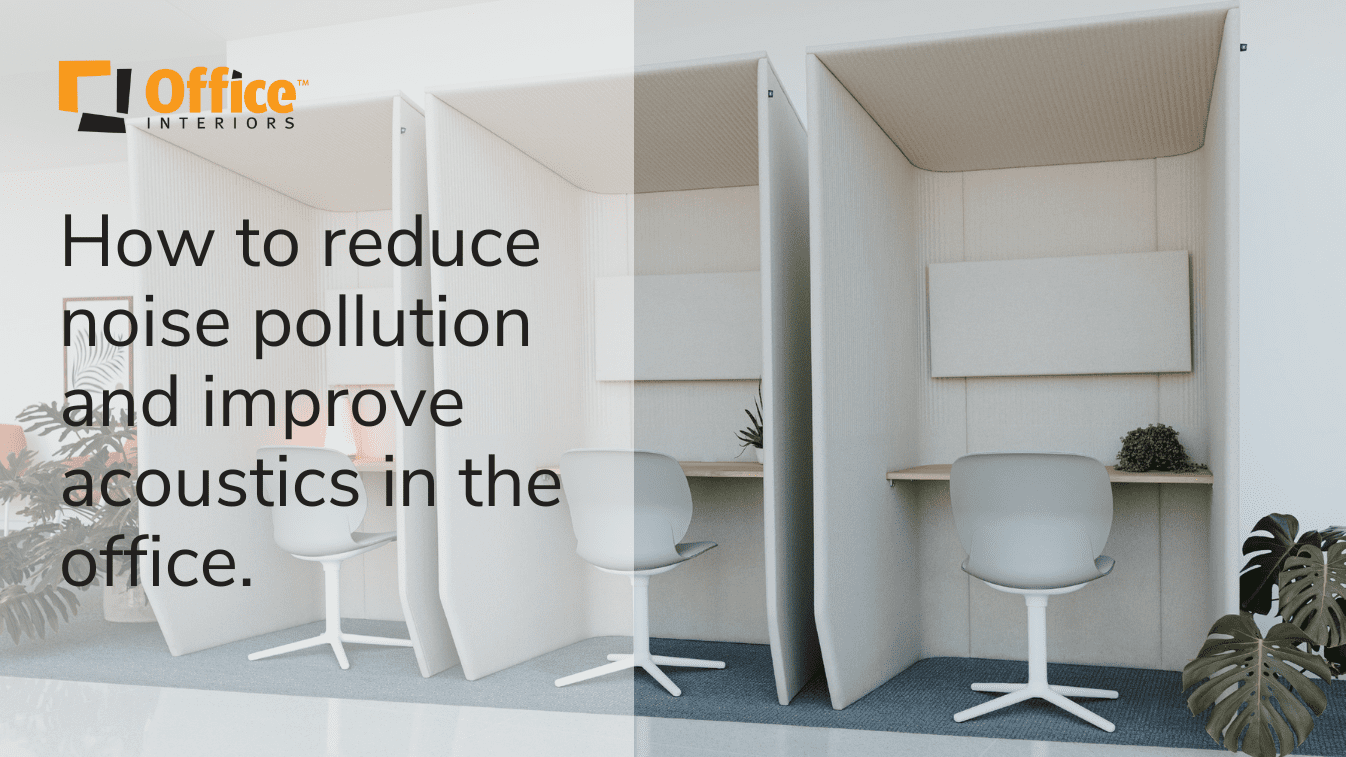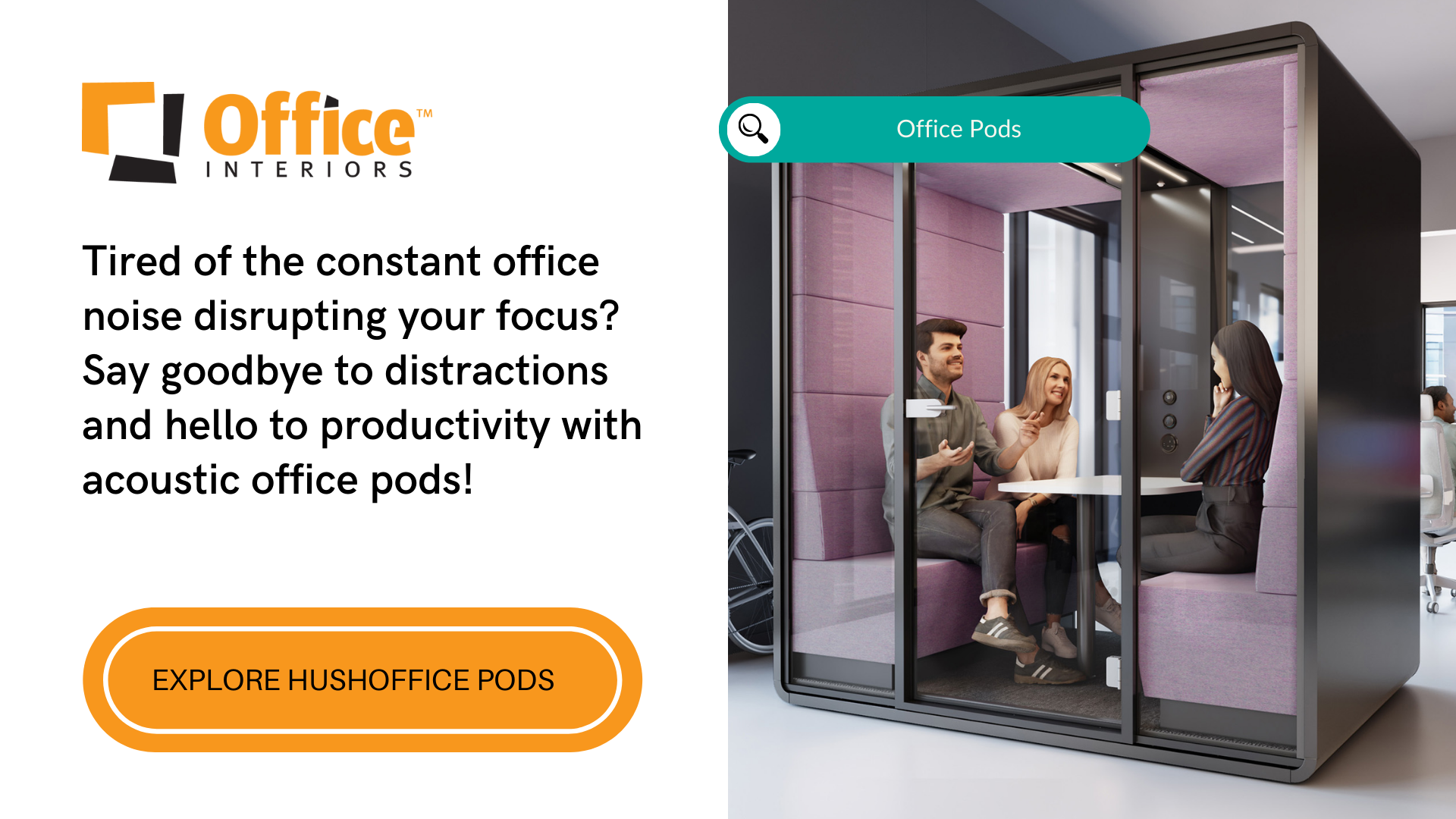How to Reduce Noise Pollution and Improve Acoustics in the Office
January 2nd, 2025 | 5 min read
By Ahona Saha

Over the years, study after study has measured employees’ satisfaction with their workplace environment, and the results have continued to point to noise pollution as a major cause of reduced effectiveness, higher stress, and declining job satisfaction. The studies also indicate most noise complaints in offices relate to speech privacy – overhearing an unwanted conversation or feeling that they are being overheard.
The Center for the Built Environment (CBE) at the University of California at Berkley surveyed 23,450 respondents from 142 buildings on building satisfaction. More than 50% of cubicle occupants and 30% of those in private offices say noise interferes with their ability to get their job done. In fact, in indoor environmental quality, poor acoustics or noise pollution cause the most dissatisfaction – even more than thermal comfort, lighting and air quality.
What is acoustic privacy?
Typically, an acoustic privacy rating of 70 dB or lower is regarded as intelligible, meaning a privacy score of 70 dB is deemed ‘not private.’ Conversely, privacy levels exceeding 90 dB are expected to be inaudible, offering a high degree of privacy. The spectrum of acoustic privacy is based on subjective assessment of non-amplified speech.
So, how do you strike the right balance of acoustic privacy in your office? What are some acoustic considerations and design choices to help you minimize noise pollution in your workspace? We’re breaking down the answers in this article.

Let’s start with the acoustical performance parameters that influence acoustic privacy.
How do we categorize the different levels of acoustic privacy?
The different levels of acoustic privacy are defined by an index known as the Privacy Index (PI). Privacy Index indicates the level of speech privacy between spaces and considers the acoustical performance of everything in the space.
The commonly recognized categories of acoustic privacy are:
- Confidential– Represents a Privacy Index (PI) of 95 to 100. Nearby conversations may be partially audible but not understood. Co-workers may hear muffled sounds, but the meaning of spoken words is not intelligible, and they are not distracted from their work.
- Non-Intrusive– Represents a PI between 80 and 95. Nearby conversations can be partially overheard, and some words or phrases may be intelligible. Co-workers may hear some of the conversation, but the loudness of speech is not distracting, and they can generally continue with their work.
Non-intrusive speech privacy is the most common design goal for most open-plan office environments. However, it is generally not an adequate design goal in functional settings such as medical facilities, law firms, financial service organizations, or human resource departments, where confidential speech privacy is generally required.
- Poor – Represents a PI of 60 to 80. Most nearby conversations can be overheard and are likely intelligible. Co-workers can understand most words and sentences, and the loudness of speech may distract them.
- No Privacy– Represents a PI of 60 or less. All conversations can be overheard and are fully intelligible. Co-workers can understand all words and sentences, and the loudness of speech can be a constant distraction.
Visual cues can impact the levels of acoustic privacy, too, and should be kept in mind when designing an office space. According to studies, seeing the speaker’s lips can boost comprehension from 20% to nearly 90%.

Designing for acoustic privacy and reducing noise pollution
One of the most effective methods for achieving speech privacy in office environments is using an approach called balanced acoustic design. It consists of three key elements, often called the “ABCs of Balanced Acoustical Design.” If any elements are missing or out of balance, speech privacy will be compromised.
These elements are:
- Absorb sound within a space using high-performance acoustic ceiling and wall treatments that prevent unwanted sound from building up due to reflections or intruding into an adjacent room.
- Block sound transmission between spaces with a combination of high-performance ceilings and effective partition wall or furniture panel design and layout.
- Cover the remaining intruding sound with an evenly distributed electronic sound masking system that can be adjusted to meet the desired speech privacy.
Attaining acoustic privacy depends on good acoustical design and the proper selection of interior systems and materials. Here are some best practices for designing specific areas for optimal acoustic privacy in your office:

- Focus Areas
Focus areas are most likely to be in an open-plan setting with multiple workstations separated by furniture panels; minimizing noise and distractions within the space is key. It is also essential to reduce the transfer of sound in all directions.
We recommend acoustic flooring materials such as carpet tiles with an acoustical backer. Adding screens to open workstations also helps reduce unwanted noise for better focus while still being able to stay connected with colleagues. You can also use full-height architectural walls to prevent sound from carrying from one space to another. Ensuring adequate background sound levels using well-tuned sound masking is a great way to cover adjacent conversations.
- Collaboration Areas
In collaboration areas, interaction and teaming activities require open communication within groups. There is also a need for two groups to be working on separate tasks in the same collaboration area. These spaces will likely be open-plan, and speech intelligibility is crucial.
Carpet and acoustical lighting can reduce the activity noise, and well-engineered HVAC systems are more efficient and quieter, leaving background levels too low. In collaborative areas, use sound masking to reduce the distance people can overhear conversations (i.e., the radius of distraction).
Combining these solutions with booths, office pods, and absorptive seating such as sofas and lounge chairs is another efficient way of containing and diffusing sound levels within collaborative areas.

- Private Areas
In today’s private office, the office isn’t just for focused work but also for formal and informal meetings. This takes on a new meaning for acoustics in the private office: it must limit distractions and help contain private conversations of any size from outside adjacent areas.
Transparency in office fronts using modular glass walls can minimize the potential for someone to linger and overhear a conversation. Higher levels of absorption in small rooms not only convey a sense of calm and cause people to reduce their voice levels, which minimizes the risk of being overheard. Window treatments and rugs add absorption and reduce reverberation while allowing user control of light and transparency.
- Board Rooms and Meeting Rooms
In some applications, having sounds scattered uniformly or diffused throughout the space makes sense. Too much absorption, for example—in the ceiling of a large conference room—can make it difficult for a person talking at one end to be heard at the other because the sound of their voice is absorbed before reaching the listener. Thoughtfully placed diffusion solutions help reflect and scatter the desired sounds so they can be heard everywhere.
Full-height walls and acoustic walls are recommended to achieve optimal acoustics in meeting rooms. Equally important is providing enough background sound to prevent sensitive conversations from being understood outside the room. Carpet and rugs—especially those with cushions—offer sound absorptive qualities to help create a comfortable ambient level. Maximize intelligibility for remote listeners by placing microphones close to the talkers and absorptive lighting close to the table.
 Acoustic, visual, and architectural privacy are interrelated.
Acoustic, visual, and architectural privacy are interrelated.
Which is good news! Because it means many office privacy solutions are versatile, unlocking multiple benefits at once. Thus, by boosting one of the three vital types of privacy, you often increase the other two as well. It’s all a matter of thought, creativity, and the right solutions.
What’s more? The RT60 app from BuzziSpace measures the reverberation time in a room and suggests products to improve sound quality. The simulation tool shows the acoustic impact of products within the space.
At Office Interiors, we take pride in being one of Haworth’s preferred dealers, allowing us to offer you the options you need to address your acoustic design needs and keep noise pollution levels minimal. Let us help you choose the solutions that address the ABCD of acoustic solutions to support people at work, influence well-being, and convey your brand. Reach out to us!
Ahona Saha
Marketing Assistant
Office Interiors
As Marketing Manager at Office Interiors, I focus on creating educational content that makes it easier for you to make confident, informed decisions about your workplace. Whether you're planning a new office, upgrading your furniture, or exploring new technology, my goal is to provide the insights and inspiration that help you create a space where your team can truly love the way they work.
Subscribe to Our Blog
Contact Us
If you’re ready to start improving productivity, streamlining processes, and love the way you work through optimized workspaces and office technology, contact us today. Our team of experts is here to help!
Topics:


